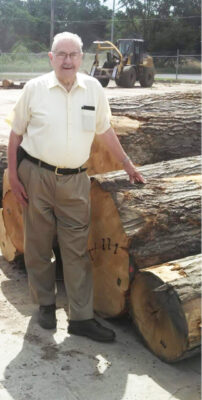As we ended summer, Hardwood production continued to edge down. The summer vacation period was a factor in this reduction, as is the changing trend in finished products purchased by consumers, and the use of composite wood and non-wood products for furniture, cabinets, flooring, and mouldings and millwork.
Contacts noted that Ash prices had increased slightly. With low Ash sawmill production, supply and demand were closely balanced, resulting in firm prices. Kiln-dried Ash is also stable, they note.
With the downturn in natural woods and natural finishes to painted wood products, Aspen production has been reduced thus limiting the excess supply of this species.
Basswood production is sufficient to meet market demand, with interest more for FAS and Select rather than the common grades.
Contacts comment that Birch demand is decent, but the lower grades are a bit more challenging to move, which is similar to other species. Upper grades are moving more easily.
With wet weather conditions throughout the summer, Hard Maple was hard to come by due to contracted logging conditions. Contacts stated that market demand for Hard Maple had not been as high as this spring, although it is still seen as the best-selling species. Supply is meeting demand for most grades and thicknesses for green Hard Maple, with prices being kept in check. There are still some grades that are low on the market for kiln dried inventories. Prices have increased slightly.
Soft Maple output was also controlled to avoid staining due to inclement weather conditions, and also due to the reduced Hardwood lumber usage by secondary manufacturers. This species is also not extremely high on the supply side and its controlled production. Contacts note seeking more inventories for No. 1 Common and Better grades.
Demand for kiln-dried No. 1 Common and Better Red Oak is doing well, and particularly in the U.S. border states. As is the same for most other species, production is down with supplies low as opposed to demand being robust. Green Red Oak No. 1 Common and Better grades are selling better than the lower grades, comment contacts.
No. 1 Common and Better White Oak was reported as a best-selling item, and moving well for both kiln-dried and green lumber. Some comment that the truck trailer and residential solid wood flooring markets are bringing down prices for certain grades.
The demand from the wood pallet and container industry is slow as most industries are seeing slowdowns. Railroad tie business is also much slower than it has been in the past several years commented contacts.
To tackle gaps in the skilled labor market, Alberta’s Ministry of Advanced Education and Ontario’s Ministry of Labor, Immigration, Training and Skills Development signed a Memorandum of Understanding (MOU) on July 5 aimed at expanding international credential recognition and opening pathways into trades for more apprentices and internationally trained workers.
“This agreement marks a significant step forward in addressing the skilled labor shortage in Alberta. By expanding our international credential recognition and working with our partners in the Government of Ontario, we can welcome more talented individuals and ensure our economy remains competitive and dynamic,” said Rajan Sawhney, Alberta’s Minister of Advanced Education.
David Piccini, Ontario’s Minister of Labor, Immigration, Training and Skills Development, emphasized the necessity of the partnership: “Ontario needs hundreds of thousands of additional skilled trades workers over the next decade to build homes, hospitals and highways. Working together with Alberta, we’re sharing knowledge and expertise on international credential recognition, removing barriers to skilled workers filling in-demand jobs and building our communities.”
International credential recognition verifies that education, skills and experience from abroad meet Canadian licensure standards. Alberta already recognizes certain international credentials, such as those for carpenters and plumbers from the Republic of Ireland. The new MOU aims to create a shared framework for international credential recognition, supporting worker mobility between the provinces and potentially leading to more internationally skilled workers taking certifying exams.
The partnership also seeks to address industry needs for post-journeypersons upgrading courses and credentials, which will help graduates of apprenticeship programs enhance their skills and career prospects.







